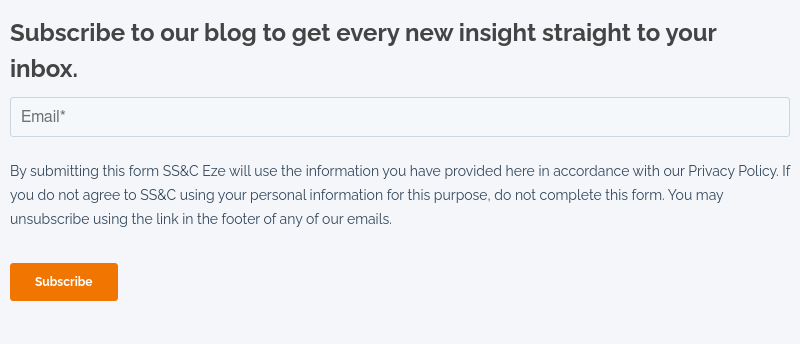In today's financial landscape, characterized by heightened volatility and increased geopolitical uncertainty, portfolio managers face a constant challenge: maximizing returns while minimizing risk. This balancing act becomes even more complex as investment strategies evolve and market dynamics shift.
Fortunately, portfolio managers are not alone in navigating this complexity. With the rise of the investment ecosystem, firms can now seamlessly integrate technological tools to harness data for superior decision-making, more robust risk management, and greater investor transparency.
This blog explores the top five considerations investment firms prioritize in portfolio construction and risk management and how the strategic integration of such tools can help firms get ahead in today’s shifting markets.

Investment Managers’ Top 5 Portfolio Construction and Risk Management Considerations
1. Improving Portfolio Risk-Return
As a portfolio manager, one of your primary challenges is ensuring that every dollar of capital is directed toward the highest sources of return. To do this effectively, you need to identify and isolate the highest risk/reward characteristics of your portfolio. A factor analysis and performance attribution target can help you determine your true alpha-generating activities and minimize unintended risk exposures, ensuring that your investment decisions are both informed and impactful.
2. Rapid Identification and Management of Risk
In rapidly evolving financial markets, the ability to swiftly identify and act on latent risks is crucial. Today, it could be inflation and rates; tomorrow, it could be a large sector rotation impacting momentum, growth, and value.
As a portfolio manager, you must have the tools and insights to drill down into your portfolio's risk exposures, understanding not just the broad market and sector risks but also the more nuanced style and idiosyncratic risks. But identifying those risks isn't enough; you then need to adjust your investment positions in real-time in line with changing market conditions to maintain your risk tolerance levels. Developing a robust risk management framework is essential for navigating the movement of the market and safeguarding your portfolio against unexpected risk.
3. Investment Decision and Strategy Refinement
Integrating sophisticated factor models into your investment process can significantly enhance your analytical capabilities, but it traditionally requires a substantial investment in IT and data infrastructure.
For portfolio managers, accessing advanced quantitative tools without the burden of significant costs or complex integration processes is a game changer. These tools enable a deeper understanding of the underlying drivers of portfolio performance and allow for more informed decision-making and strategy refinement.
4. Simulating and Developing Resilient Strategies
The ability to analyze historical position data and simulate its impact on your fund's overall risk is crucial for portfolio managers. Such retrospective analysis not only aids in understanding past performance dynamics but also in validating future investment strategies.
This process is crucial for due diligence, allowing for a more empirical assessment of prospective or existing investments. By simulating different market scenarios, you can develop strategies resilient to various market conditions, enhancing your portfolio's ability to withstand volatility and uncertainty.
5. Showcasing Performance and Differentiation for Investors
Funds face the dual challenge of demonstrating performance differentiation and aligning portfolio managers' views with the actual risks taken, which is pivotal for investor attraction and retention.
Intuitive visualizations enable investor relations and marketing teams to effectively showcase the fund's unique attributes and articulate risk strategies in their materials. These efforts are about transparency and bolstering investor confidence while securing a distinct competitive edge in an increasingly saturated market.
SS&C Eze technology users can now address these considerations through a new Eze Marketplace plug-and-play integration with Omega Point.
Omega Point is a leader in risk management and portfolio construction. It serves world-leading banks, asset managers, hedge funds, and other financial institutions and collectively manages over $5T AUM.
The comprehensive and user-friendly platform addresses the nuanced needs of portfolio managers, solving critical challenges related to alpha isolation, risk management, factor model integration, historical data analysis, and marketing and investor relations. Omega Point not only enhances the decision-making process but enables you to communicate your strategies and performance more transparently, fostering trust and confidence among stakeholders.
If you're a portfolio manager striving to maximize returns, minimize risk, and more easily navigate the complexities of modern markets, don't miss your opportunity to gain a competitive edge with Omega Point.
Reach out to your SS&C Eze technology account manager or contact us to learn more.


